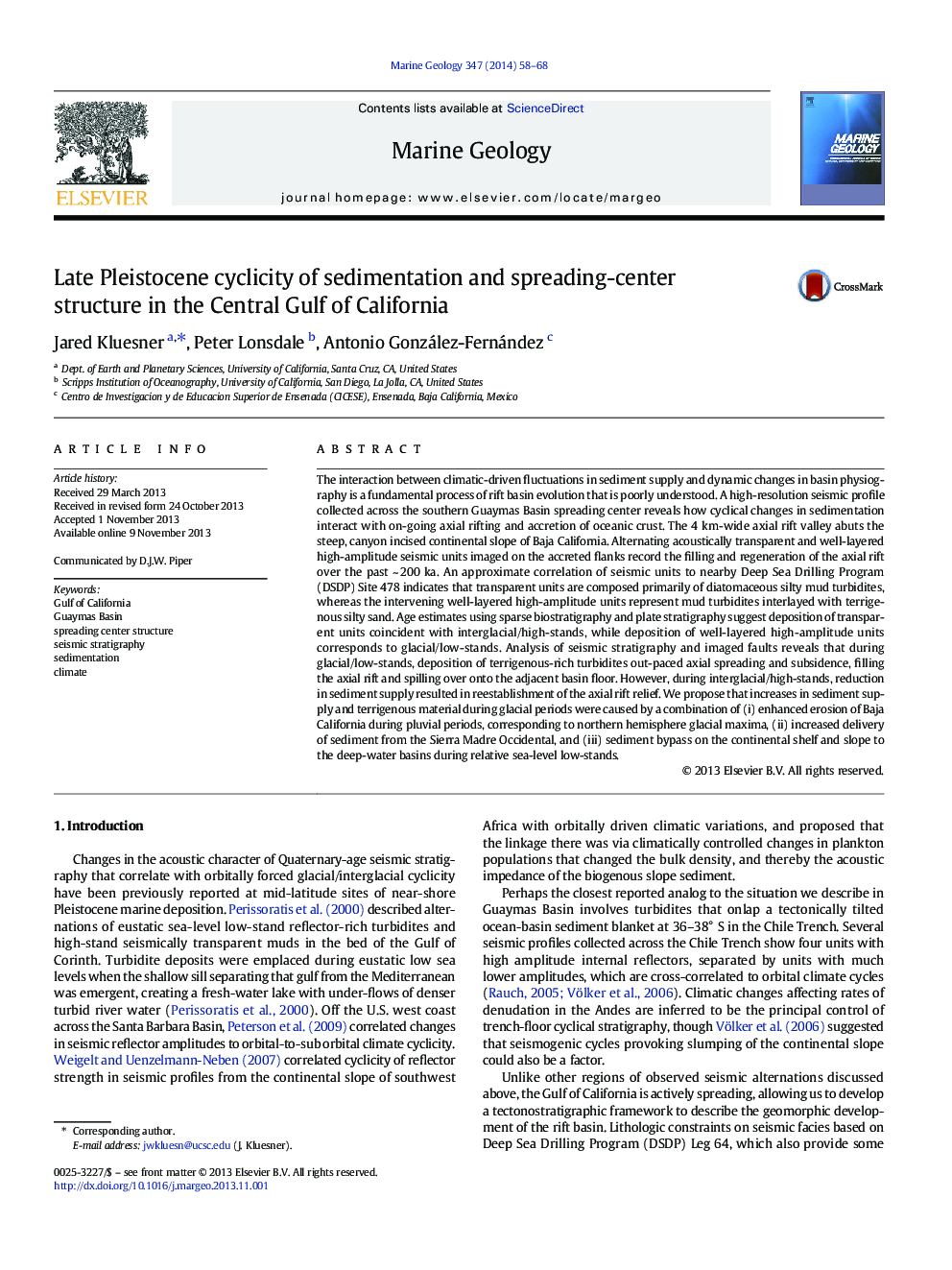| کد مقاله | کد نشریه | سال انتشار | مقاله انگلیسی | نسخه تمام متن |
|---|---|---|---|---|
| 4718348 | 1639105 | 2014 | 11 صفحه PDF | دانلود رایگان |
• We present seismic stratigraphy across the Southern Trough of Guaymas Basin.
• We approximately correlate nearby drilling results to seismic facies.
• We use biostratigraphy and plate stratigraphy to better constrain the ages of the seismic units.
• We discuss regional paleoclimte data and modeling and effects on sedimentation.
• We propose a model for the development of the spreading center structure.
The interaction between climatic-driven fluctuations in sediment supply and dynamic changes in basin physiography is a fundamental process of rift basin evolution that is poorly understood. A high-resolution seismic profile collected across the southern Guaymas Basin spreading center reveals how cyclical changes in sedimentation interact with on-going axial rifting and accretion of oceanic crust. The 4 km-wide axial rift valley abuts the steep, canyon incised continental slope of Baja California. Alternating acoustically transparent and well-layered high-amplitude seismic units imaged on the accreted flanks record the filling and regeneration of the axial rift over the past ~ 200 ka. An approximate correlation of seismic units to nearby Deep Sea Drilling Program (DSDP) Site 478 indicates that transparent units are composed primarily of diatomaceous silty mud turbidites, whereas the intervening well-layered high-amplitude units represent mud turbidites interlayed with terrigenous silty sand. Age estimates using sparse biostratigraphy and plate stratigraphy suggest deposition of transparent units coincident with interglacial/high-stands, while deposition of well-layered high-amplitude units corresponds to glacial/low-stands. Analysis of seismic stratigraphy and imaged faults reveals that during glacial/low-stands, deposition of terrigenous-rich turbidites out-paced axial spreading and subsidence, filling the axial rift and spilling over onto the adjacent basin floor. However, during interglacial/high-stands, reduction in sediment supply resulted in reestablishment of the axial rift relief. We propose that increases in sediment supply and terrigenous material during glacial periods were caused by a combination of (i) enhanced erosion of Baja California during pluvial periods, corresponding to northern hemisphere glacial maxima, (ii) increased delivery of sediment from the Sierra Madre Occidental, and (iii) sediment bypass on the continental shelf and slope to the deep-water basins during relative sea-level low-stands.
Journal: Marine Geology - Volume 347, 1 January 2014, Pages 58–68
